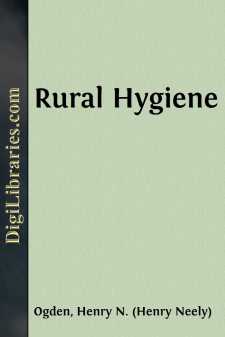Categories
- Antiques & Collectibles 13
- Architecture 36
- Art 48
- Bibles 22
- Biography & Autobiography 813
- Body, Mind & Spirit 142
- Business & Economics 28
- Children's Books 17
- Children's Fiction 14
- Computers 4
- Cooking 94
- Crafts & Hobbies 4
- Drama 346
- Education 46
- Family & Relationships 57
- Fiction 11829
- Games 19
- Gardening 17
- Health & Fitness 34
- History 1377
- House & Home 1
- Humor 147
- Juvenile Fiction 1873
- Juvenile Nonfiction 202
- Language Arts & Disciplines 88
- Law 16
- Literary Collections 686
- Literary Criticism 179
- Mathematics 13
- Medical 41
- Music 40
- Nature 179
- Non-Classifiable 1768
- Performing Arts 7
- Periodicals 1453
- Philosophy 64
- Photography 2
- Poetry 896
- Political Science 203
- Psychology 42
- Reference 154
- Religion 513
- Science 126
- Self-Help 84
- Social Science 81
- Sports & Recreation 34
- Study Aids 3
- Technology & Engineering 59
- Transportation 23
- Travel 463
- True Crime 29
Rural Hygiene
Categories:
Description:
Excerpt
PREFACE
The following pages represent an attempt to put before the rural population a systematic treatment of those special subjects included in what is popularly known as Hygiene as well as those broader subjects that concern the general health of the community at large.
Usually the term "hygiene" has been limited in its application to a study of the health of the individual, and treatises on hygiene have concerned themselves almost entirely with discussing such topics as food, clothing, exercise, and other questions relating to the daily life of a person. Of late years, however, it has become more and more evident that it is not possible for man to live to himself alone, but that his actions must react on those living in his vicinity and that the methods of living of his neighbors must react on his own well-being. This interdependence of individuals being once appreciated, it follows that a book on hygiene must deal, not only with the question of individual living, but also with those broader questions having to do with the cause and spread of disease, with the transmission of bacteria from one community to another, and with those natural influences which, more or less under the control of man, may affect a large area if their natural destructive tendencies are allowed to develop.
Being written by an engineer, the following pages deal rather with the structural side of public hygiene than with the medical side, and in the chapters dealing with contagious diseases emphasis is attached to quarantine, disinfection, and prevention, rather than to etiology and treatment. The book is not, therefore, a medical treatise in any sense, and is not intended to eliminate the physician or to give professional advice, although the suggestions, if followed out, undoubtedly will have the effect of lessening the need of a physician, since the contagious diseases referred to may then be confined to single individuals or to single houses.
It has not been possible, within the limits of this one book, to describe at length the various engineering methods, and while it is hoped that enough has been said to point the way towards a proper selection of methods and to a right choice between processes, the details of construction will have to be worked out in all cases, either by the ingenuity of the householder or by the aid of some mechanic or engineer.
Finally, it may be said that two distinct purposes have been in mind throughout,—to promote the comfort and convenience of those living in the rural part of the community who, unfortunately, while most happily situated from the standpoint of health in many ways, have failed to give themselves those comforts that might so easily be added to their life; and in the second place, to emphasize the interdependence of the rural community and the urban community in the matter of food products and contagious diseases, an interdependence growing daily as interurban communications by trolley and automobile become easy.
Cities are learning to protect themselves against the selfishness of the individual, and city Boards of Health have large powers for the purpose of guarding the health of the individuals within their boundaries....


